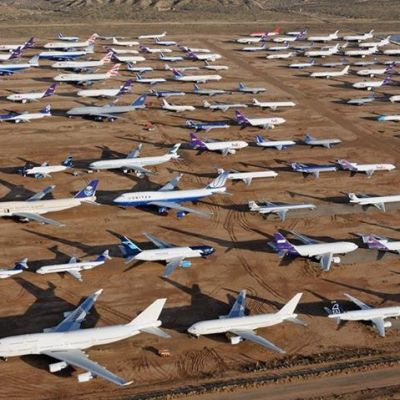
“The problem with aviation is that for 50 years it’s been populated by people who think it’s this wondrous sexual experience; that it’s like James Bond, and wonderful, and we’ll all be flying first class, when really it’s just a bloody bus with wings.” (Michael O’Leary, Ryan Air)
Technology and payment system are today a very high cost to the commercial airlines. When looking at most airlines a minimum of 10% is spent on marketing, distribution, and technology infrastructure. Just looking at the cost to Global Distribution Systems (GDS) gives an insight. While companies like Amadeus price their internal airline systems at about 1€ per segment, they charge 5€ per segment for distribution. With two decades of decreased airfares, distribution has become a much higher percentage cost to the commercial airlines.
Now we see a new trend that may end in revolutionize distribution and sales: airlines passing the cost using GDS on to the Travel Management Companies (TMC) and in the end the buyers.
At least 2 legacy airlines (SAS and AF/KLM) have informed the regional markets that next year they will pass on the cost using GDS to the TMC and Travel agencies if booked traditionally and not using New Distribution Capability (NDC) or API.
Starting in April 2023, American will begin to discontinue their support for legacy technology (GDS). A significant amount of American’s existing products will become exclusively accessible to travel retailers and Online Booking Tools (OBTs) in modern retailing channels powered by NDC technology.
It may sound trivial, but we are talking about serious cost to the airlines and now the buyers. Agencies in France have identified the cost at 13€ per trip. To SAS (with 25 million passengers) it means an annual cost saving of 250-325 million€ that are now being passed on to the traveler and buyers. Most of this cost will hurt businesses with frequent travelers.
Both airlines use the same way to administrate the new structure, and this means serious added administration by the TMC. The usage of the same structure as BSP Agency Debit/Credit Memo and thus no cost to the airlines but the data will arrive up to 3 months after the trip and then the TMC will probably pass on to the buyers. It may end as an administrative nightmare.
The airlines are also planning to keep their cheapest fares away on the traditional GDS structure, which can hurt both the business travel and leisure sector.
Their key demand is to force the intermediaries and customers using New Distribution Capability (NDC) which is already an old solution with limitations. GDSes are holding on to their ancient high pricing for distribution and only develop on the fringes of their old mainframe structure. Every airline needs to rethink the whole distribution, pricing, and payment structure.
All the wonderful new technologies the airlines crow about are really just at the periphery. Where the real work needs to be done is in the core. That is the selling systems and the inventory management systems. Airline selling systems are diabolically antiquated. Even the so-called real innovators in offer and sales management – companies like Farelogix, Datalex, OpenJaw, and Air Black Box — are still battling to bring modern retailing systems into general use.
Airlines are finally increasingly using application programming interfaces, or APIs, to distribute their fares. An API is like a data feed any company can plug into. If an airline creates a robust API, then any modern merchant can plug in and start selling. That means that a retailer like Amazon or a non-airline travel supplier such as Accor or Carnival could more easily sell flights as a sideline.
The data-sharing technique could make the selling of flights outside of travel agencies more widespread. Some travel sellers like Google and Skyscanner are pushing airlines to make it standard practice. Yet practical issues, such as commercial terms, regulatory issues, and customer servicing, have held up the adoption of the data-sharing method for selling plane tickets. So, a London-based startup called Duffel launched a platform to try to change that dynamic.
Duffel’s new platform strives to help about 20 airlines — including American Airlines, Lufthansa Group, British Airways, Emirates, Cathay Pacific, Transavia, United Airlines, and Air Canada — distribute their fares to third parties like retailers, banks, and travel companies
I would be remiss if I didn’t actually indicate that the whole processes of the industry and of its IT are REALLY complex and complicated. Much of it is self-induced pain. Simple processes take forever to implement. For small changes – the ROI frequently doesn’t get made because the process of adopting change is so hard and expensive.
We need to bring back simplicity and ease of use and ease of change. It is not the customer who will not make the change, it is the airline and its supplier stakeholders. The consumer has shown themselves to be quite adept at change. Conventional retailing giants like Tesco and Walmart must be laughing at our industry’s naivety. Perhaps not so loud, though, since they can’t get travel to work either!
Product launches and technology will offer new ways of thinking. Just think what it will mean to aircraft crew to change the ancient wagon they push through the aisle! With modern technology airlines can personalize the offerings, charge more money, and even make life easier for staff.
You do not need to look for new ways for distribution further than to Amazon. Here are some facts:
- Amazon does 250 million price changes every day all year round.
- Amazon UK alone changes 50 million changes every day.
- Amazon’s product portfolio is about 12 million items but with the partners 350 million items.
- Most items have an upsell feature from others who bought this or here is an added cheap feature.
- The average product’s price will change once every 10 minutes.
Translate this into the airline world:
Using big data and have your own data inhouse: Amazon noticed that millions of customers buy peanut butter, jelly, and bread together. Then, say you buy peanut butter and bread off Amazon. Using the pattern that it’s found; Amazon could suggest you buy jelly. When book a flight you know that most buy a sandwich, then add water, wine, or a drink, and if a drink is chosen offer snacks as suggestions. Why not sell a toy bear or LEGO box to be picked up by travelers embarking at the home destination to take home to their kids.
Allow me to muse a little here.
- While many baby-boomers are well off many are not. Why not introduce pensioner fares as many airlines have youth fares?
- Why not cater to the well-off part of the same segment and offer discount on upgrading?
- Why not offer special tax-free packages supported by the brands?
- Why not work with tourist offices at destination where most passengers are corporate travelers and launch special segmented fares filling the planes?
- Make special bookable food offerings targeting well off segments?
- Invite a magician on flights with many children?
I am aware that inside many airlines these kinds of reviews and ideas are taking place. I just wish to urge the needed changes before third parties arrives and force their solutions on the industry.
The trend with the most potential influence will be the combination of pollution and public interference as the climate changes has become much more visible to everyone everywhere. Currently global aviation pollutes more than 2 billion tons of CO2 every year and are on the target to double this in one or two decades. This means it will represent 5-7% or more of the total pollution. Sooner rather than later governments will be forced to act on this challenge.
Other trends are well known even if not available to the public. Congested airspace and airports, oil dependence, urbanization, public interference, safety, aging population and new generations, technology both direct and indirect, alternative transportation (high speed trains), access to finance (expensive and big investments).
Other Trends influencing the future of aviation are Companies involved in seat upgrades are as much of a symptom of the airline IT problem as an opportunity. It just shows how antiquated the technologies have become when a company exists to offer – an upgrade? That is not a company. It is hardly a product. It is a feature and should be so. With apologies to the companies trying to do this – I am sure it is a good idea but is it really one to build an entire company around? As someone who has led multiple teams that have brought change to the airline and travel IT-world, I am incredibly frustrated by the slow pace of change in the industry today.
Next step and suggestions
- Every airline needs to rethink the whole distribution, pricing, and payment structure.
- Why not use and learn from other industries like retailing?
- Why not look for alternative segments and channels for distribution?
- Why not learn from and use social medias to attract new business and passengers?
- Why not use the access to millions of travelers you transport every day to help offset pollution?
- Why not force governments to help document and use the value of a levy?
- Why not invent new travel products and services?
- Why not implement just-in-time and increase productivity i.e. in freight?
- Why not replace the ancient wagon in the airplanes?
- Why not reeducate your organization and make them customer focus?
- Why not look and learn from retailers or supermarkets?
What are the opportunities?
Commercial the airlines have just begun to reap the benefits of new marketing tools. Due to all the information, they hold of both corporate and private travelers, they know almost as much as Google and Facebook about our preferences. Once they find the right business model, their offerings will be much more tailormade, faster to the markets and better segmented. This means better yields and utilization of capacity.
Many airlines can become the Amazon of travel related services and products and use the time in the air or at the airports to present and launch products through demonstrations and shows.
Whether a business needs additional licenses to sell flights with Duffel will depend on where they are and where the consumers they are selling to are located. For instance, in the UK, Germany, or Australia, you don’t need to be licensed to sell flights. But some countries such as France and other jurisdictions will require you to get a local travel agent license.
Flight distribution isn’t new, of course. Resellers have accessed airline inventory through wholesalers, consolidators, global distribution systems, tech companies like Peakwork, Flyiin, Dohop, and Skyscanner, affiliate networks like Expedia’s and TravelPayouts‘s, and other connections from airlines or agencies. One of the new players are Spotnana that simply created a new platform and are now pushing the airlines to deliver (READ MORE HERE) about the GDSes.
A final thought. Beware. there are now powerful players eyeing this situation with relish. Unless the industry takes heed of this wake-up call, then better providers will enter the market.



